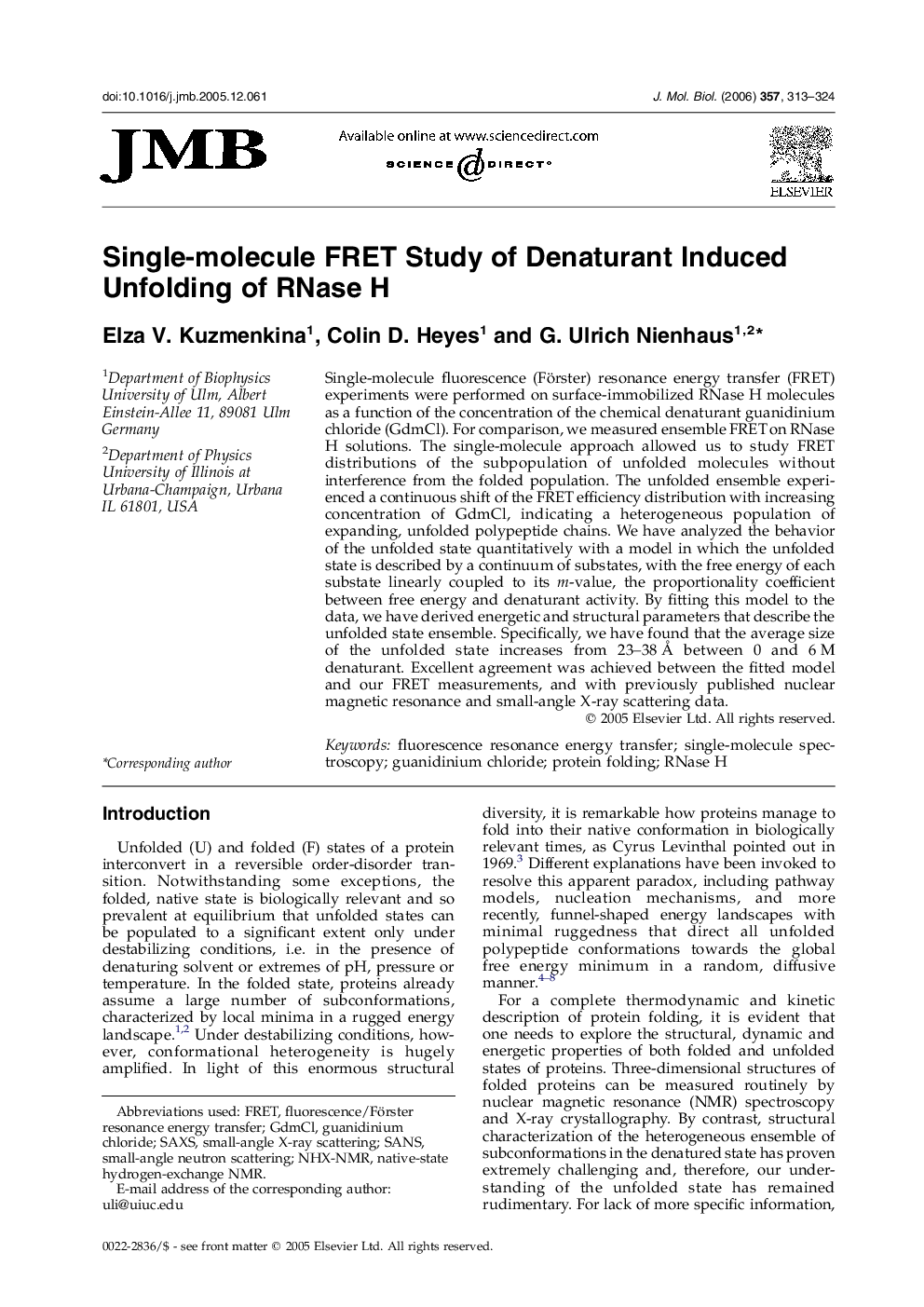| Article ID | Journal | Published Year | Pages | File Type |
|---|---|---|---|---|
| 2190137 | Journal of Molecular Biology | 2006 | 12 Pages |
Single-molecule fluorescence (Förster) resonance energy transfer (FRET) experiments were performed on surface-immobilized RNase H molecules as a function of the concentration of the chemical denaturant guanidinium chloride (GdmCl). For comparison, we measured ensemble FRET on RNase H solutions. The single-molecule approach allowed us to study FRET distributions of the subpopulation of unfolded molecules without interference from the folded population. The unfolded ensemble experienced a continuous shift of the FRET efficiency distribution with increasing concentration of GdmCl, indicating a heterogeneous population of expanding, unfolded polypeptide chains. We have analyzed the behavior of the unfolded state quantitatively with a model in which the unfolded state is described by a continuum of substates, with the free energy of each substate linearly coupled to its m-value, the proportionality coefficient between free energy and denaturant activity. By fitting this model to the data, we have derived energetic and structural parameters that describe the unfolded state ensemble. Specifically, we have found that the average size of the unfolded state increases from 23–38 Å between 0 and 6 M denaturant. Excellent agreement was achieved between the fitted model and our FRET measurements, and with previously published nuclear magnetic resonance and small-angle X-ray scattering data.
